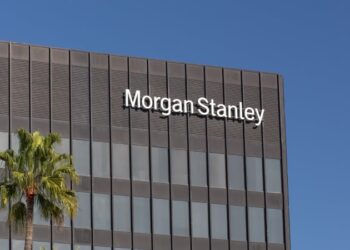Think tank Climate Energy Finance (CEF) has highlighted how Australia’s largest banks are “missing the mark” on driving the net zero transition, with only 7 per cent of their sustainable finance going to renewables and decarbonising the industry.
Its research, quantifying the sustainable finance targets (SFTs) of Commonwealth Bank of Australia, NAB, Westpac, and ANZ, found a collective target of $385 billion this decade to fund the domestic energy transition.
Specifically, it found CBA has allocated $45 billion over three years towards its $70 billion SFT by 2030, while ANZ began with $50 billion in financial year 2020 and has extended “at least” an additional $100 billion in support of “environmental and social outcomes” this decade. Its cumulative SFT allocation to date is $56 billion.
Meanwhile, Westpac achieved $13 billion total committed exposure last year, increasing its balance sheet growth ambition in climate solutions from $15 billion to $55 billion by 2030, plus $40 billion in bond facilitation.
NAB hit $70 billion in environmental financing over seven years to financial year 2022, with the promise to establish a new, “more ambitious” target this year.
However, CEF’s research indicated an over-concentration of banks’ sustainable finance activities in one asset class, namely “green buildings”, which CEF described as “low hanging fruit” that “meet minimum energy efficiency regulations under the National Construction Code”.
Its modelling, combining the SFT allocations of the four banks, found 44 per cent was allocated to green buildings.
Some 14 per cent was linked to sustainability-linked capital, 17 per cent to facilitated capital, and 1 per cent to transport.
Just 7 per cent was allocated to renewable energy.
According to CEF, this finding demonstrates an “enormous gap” in banks’ financing of emissions reduction in key sectors including energy and transport, putting Australia “behind in the race” to capture the massive investment, trade, and employment opportunities of the net zero transformation.
“While energy efficient buildings are necessary to reduce grid demand during peak summer and winter months, buildings are only truly green once they are fully electrified, the grid is producing zero emissions electricity, and building materials are decarbonised,” said Nishtha Aggarwal, financed emissions analyst at CEF and the report’s author.
“That requires concerted action and capital allocation to retrofit gas appliances with electric, build firmed utility-scale renewable energy, and reduce emissions in hard-to-abate sectors like steel, cement, and aluminium.”
Delving deeper, the analysis revealed CBA boasts the “worst” renewable energy to green building financing ratio, investing nearly $8 into minimum regulatory-grade buildings for every dollar it invests in renewables.
ANZ’s contribution to real-world outcomes is “largely opaque” with a combined 64 per cent allocation towards instruments such as sustainability-linked and facilitative finance.
“The trouble with this is that capital could be facilitated or allocated to companies without credible decarbonisation pathways, and hence misaligned to the transition. This is a risk given ANZ’s client base, board composition, and its continually high fossil fuel exposure whilst being the only big four bank without a substantive policy to restrict financing to new oil and gas,” Aggarwal said.
A similar transparency issue was observed with NAB. Its major focus, according to CEF, looks to have been a green property play comprising almost 50 per cent of its total SFT allocation to FY2022, with little transparency in other decarbonisation sectors.
“Given this, we were unable to discern the bank’s allocation to renewables, transport or hard-to-abate sectors. In a rapidly warming climate with forthcoming climate-related finance disclosure regulations, greater transparency over NAB’s SFT allocation by sector will be material information.”
The analysis found Westpac is “by far the closest to getting the balance right”, with a higher proportion of financing going towards renewable energy and low carbon transport than the other banks.
Aggarwal added: “Westpac’s ‘total committed exposure’ (TCE) measurement is distinct from the other banks, measuring the stock of capital at a point in time rather than the cumulative flow. It means Westpac’s cumulative financing over time will be more than its stated 2030 balance sheet target of $55 billion TCE.”
According to Aggarwal, “trumpeting climate action based on the low hanging fruit of financing minimally green-rated buildings is not enough”.
It also leaves the big four banks open to accusation of greenwashing, she added.
“The over-representation of fossil fuel interests on Australian banks’ boards is highly likely to undermine the credible pivot of climate finance. The banks should urgently remove the influence of these interests and recruit zero emissions expertise to drive credible net zero capital allocations to renewables and economy-wide decarbonisation,” Aggarwal said.
“The banks should be using their firepower to advocate for more ambitious and coordinated policy, regulatory and investment settings that reflect and enable our national climate and sustainable economic growth goals, demonstrating leadership in Australia’s economic transformation to a zero-carbon economy.”







